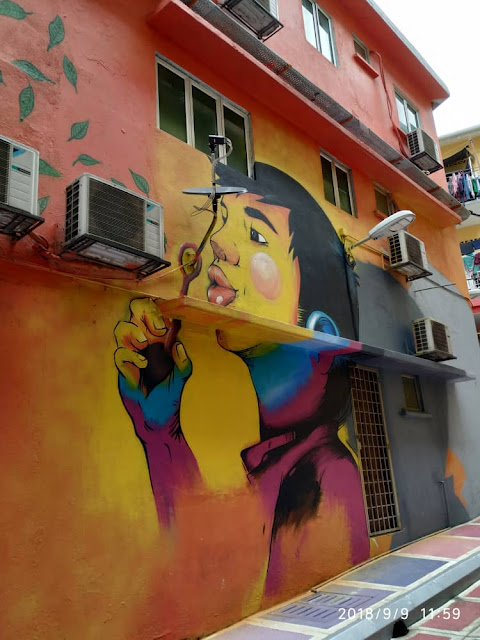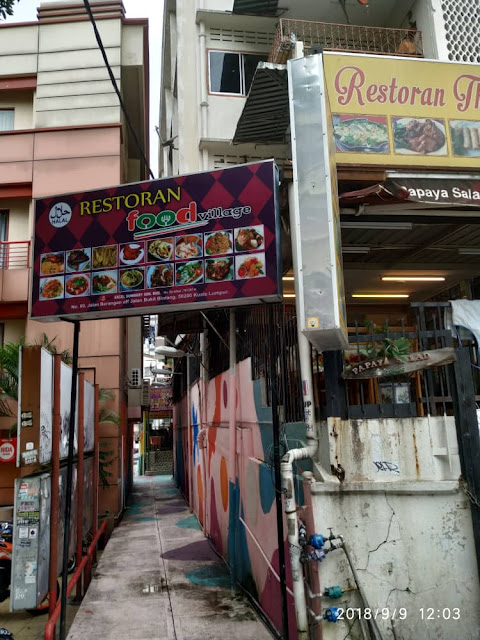Below are our insights and thoughts on the school. This is a long post but readers are encouraged to read to the end including the most important part which is the Summary at the end of the post.
About the Open Day
Firstly, we'll walk you through the Open Day as it happened so you know what to expect at the school's Open Day. We note that it is advisable to attend the Open Day from start to end so that you get the full picture and do not miss out on any of the planned or organized activities.
The Open Day started at 10 am with the rousing performance by the primary school's 24 Seasons Drum troupe. This was in the school hall where primary school teachers and secondary school teachers were seated to personally talk to parents. You can speak to the teachers one-to-one here and ask them any questions you have about the school.
We attended all the talks and spoke to academicians of both the primary and secondary schools and we will share with you what we have learned.
Two Schools Under One Roof
Sri KDU schools is made up of two schools under one roof.
1. Sekolah Sri KDU is a private school doing the Malaysian National Curriculum (KSSR/KSSM)
2. Sri KDU International School is an international school using the National Curriculum of England followed by the Cambridge IGCSE.
The Open Day we attended is for Sekolah Sri KDU which is the private school that is using the Malaysian National Curriculum (KSSR/KSSM) so that is what we will talk about in this post. Let's start with some questions that immediately come to mind.
Q1. What Makes Sekolah Sri KDU Different From A Public School If It Runs The Same Syllabus?
- The schooling hours are from 8.00 am to 3.30 pm for Mondays to Thursdays and from 8 am to 12.30 pm on Fridays. For the secondary school, the schooling hours are from 7.50 am to 3.40 pm for Mondays to Thursdays and from 7.50 am to 12.30 pm on Fridays.
- It incorporates Singapore and Cambridge curricula into our local syllabus. In this way, it combines and makes use of the best in both worlds - the detailed content in the local syllabus plus the pedagogy of the international curriculum with more emphasis on higher order thinking skills.
- In addition to the local syllabus, students learn coding and performance arts making them more rounded individuals.
Q2. Why are the hours so long?
- Compulsory co-curricular activities of one sport and one uniformed unit/club are included during schooling hours.
- There are some additional compulsory subjects including Mandarin, Cambridge ICT Starters/ Computer Science (Coding), and Structured Performing Arts Programme.
- Students need to take 2 activities under the Structured Performing Arts Programme
Assigned one from Musical Theatre, Dance, Vocals and pick one from Musical Instruments (Primary: Violin, Ukelele or Piano; Secondary: Acoustic Guitar or Drums) or assigned two from Musical Theatre, Dance, Vocals if they do not want to take any Musical Instruments.
- For subjects like Maths and Science, the hours may be longer than those required by the Ministry of Education by an extra 4 periods each. This makes it possible for students to study both local and other syllabi including the Singapore and Cambridge curricula.
Although the primary school conducts the local syllabus, it incorporates the Singapore and Cambridge Primary Curricula for English, Maths and Science.
In secondary school, the Cambridge Secondary 1 Curriculum is used for English, Mathematics and Science. Form 3 students can opt to sit for the Cambridge Checkpoint Test in addition to PT3 which acts as a diagnostic test to gauge if students understand the syllabus.
Below are some of the curriculum and co-curricular activities that may interest you.
Now, let's go on a mini "tour" around the school. I was taken on a tour by two delightful girls from the primary school and a teen boy and teen girl from the secondary school. Below are some pictures I managed to snap.
Sekolah Sri KDU which does the local syllabus and Sri KDU International School share the same campus with separate buildings for both schools including separate buildings for primary and secondary schools. Certain facilities like canteens and libraries are separate while others like the swimming pool and multi-purpose hall are shared.
This is the corridor of the primary school classrooms. There are about 5-8 classes for each level in primary school with each class having a maximum of 28 students. Each class has a homeroom teacher and assistant homeroom teacher while Primary 1 classes have additional academic assistants.
This is the secondary school building. The classrooms are similar to the primary school classrooms but in a different colour scheme and with lockers provided as well. There are about 7-10 secondary classes with up to 28 students per class.
These are some of the sports day decor done by the secondary school students. They look really awesome. I also noticed other props from the students' theatrical production which are just as impressive. Every year the students put up a production and handle all stages of production independently.
This is the secondary school library.
The library is stocked with English, Chinese and Malay books. This is because Sekolah Sri KDU is a trilingual school. They use the national KSSR/KSSM syllabus where most of the subjects are taught in BM. They are a DLP school which means that Math and Science is conducted in English. In addition to that they use the Cambridge Secondary 1 Curriculum for English, Maths and Science.
Mandarin is a compulsory subject for P1 to Secondary 3 and an elective subject for Upper Secondary. (Secondary 4 & 5). Students can also opt to sit for Mandarin in PT3 and SPM. Mandarin classes are divided into basic, intermediate and advanced offering listening and speaking skills and advancing to reading and writing skills especially for those who come from SJKC schools (local Chinese schools).
This is the secondary school cafeteria. According to a student, they are able to order freshly cooked food for lunch. Students, both primary and secondary carry an ID card which they can top up with cash and use it to purchase food.
Sekolah Sri KDU offers a unique learning environment that is very versatile. This is why we think so.
1. If offers the teaching and learning of Mandarin for families who want their children to learn Mandarin but prefers not to send their kids to SJKC.
2. It offers those who has had 6 years of learning Mandarin in SJKC to have some form of continuity in learning Mandarin during the secondary years without the stress of taking exams so that they do not lose touch with the language. They are encouraged to take the exams if possible.
3. It offers a cheaper alternative to international school. The trilingual environment means that students are frequently exposed to English which would improve their fluency in the language. Some students join Sekolah Sri KDU in primary and switch to Sri KDU International school in secondary.
4. It offers ICT for the whole of primary and secondary and computer science (coding) for primary as part of its curriculum. These are compulsory subjects.
5. It encourages holistic learning. The performing arts, speech, drama, dancing, singing and music is encouraged and included in the curriculum during schooling hours.
6. Since the national syllabus is taught at Sekolah Sri KDU, parents can opt to move their children back to SK at any time if the situation calls for it.
Fees start from RM21,000. If you need more information on the fees or other information not included here, you can visit the school during the Sekolah Sri KDU Info Day on 16 October 2018, 9:00a.m. to 12:30p.m. This is during a weekday when classes are ongoing so you can see the school in action. The best time to visit a school is during school days so you can see the students and teachers going about their day to day routine and visualize if your child will fit in the school.
Happy school hunting everyone!
.png)
.jpg)












































.png)